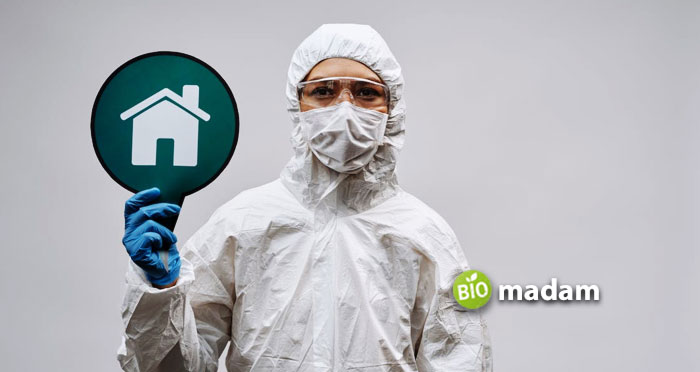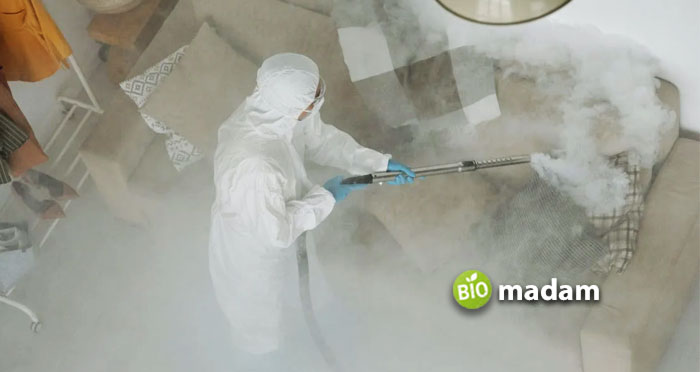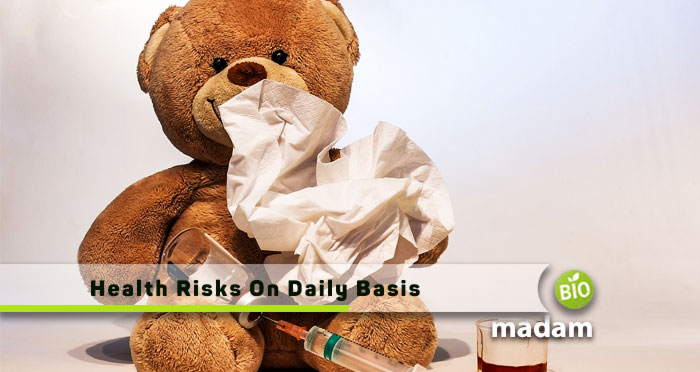Most people think of their home as a haven, a place where they can relax and escape the dangers of the outside world. But what if your own home is one of the dangers? Believe it or not, you are at a high risk of diseases and conditions in your own Belleville home.
From asbestos and lead paint to radon gas and carbon monoxide poisoning, there are six potential hazards that you need to be aware of.
The Asbestos Hazard
Asbestos is a mineral fiber that was once used in a variety of building materials, including insulation and fireproofing and while it is forbidden to use in new construction, it can still be found in older homes. If the fibers are inhaled, they can cause lung cancer and other diseases and illnesses. If you suspect that your home may contain asbestos, it is important to have it tested by a professional.

Additionally, you should never try to remove asbestos yourself. If you do need to have it removed, make sure to hire a certified professional who has the proper safety equipment and training.
Mold and Mildew
Mold and mildew are fungi that grow in damp, dark areas. They can cause several health problems, including respiratory problems, skin irritation, and allergic reactions. They are usually found in bathrooms, basements, and kitchens.
To prevent mold and mildew growth, keep your home clean and dry. Repair any leaks and make sure to ventilate areas that tend to be damp, such as the bathroom and laundry room.
However, if you suspect that your home has a mold or mildew problem, it is important to have it inspected by a professional. A local Belleville mold removal service will not only be able to test for mold, but they can also remove it safely if it is present. The importance of the local professional service is that they will know the proper techniques for removing mold in your area to prevent it from spreading.
Lead Paint
Lead paint was used in homes until 1978 when it was banned due to the health risks it poses. If you live in an older home, there is a good chance that it contains lead paint. If the paint is in good condition, it usually isn’t a problem. However, if it is chipping or peeling, it can release lead dust into the air. This dust can be inhaled or ingested, and it can cause several health problems, especially for children and pregnant women including learning disabilities, behavior problems, and seizures.
If you believe that your home may have lead paint, even under the other paint layers, have it tested by a professional. If it does contain lead paint, do not try to remove it yourself. Make sure to keep away, especially children and pregnant women, from any areas where there is lead paint present.
Radon Gas
Radon is a gas that is produced by the decomposition of uranium in the soil. It is odorless and invisible, and it can seep into homes through cracks in the foundation. Once inside, it can build up to dangerous levels while exposure to high levels of radon gas can cause lung cancer and other respiratory problems.
The only way to know if your home has radon gas is to have it tested. Radon test kits are available at most hardware stores, and they are relatively easy to use. If the test detects high levels of radon, you will need to have a radon mitigation system installed in your home.
This system will work to vent the gas out of your home so that it doesn’t build up to dangerous levels.
Carbon Monoxide Poisoning
Carbon monoxide is a gas that is produced whenever anything is burned, such as gasoline, natural gas, wood, or coal. It is odorless and invisible, and it can build up to dangerous levels inside homes. If inhaled, it can cause headaches, dizziness, nausea, and even death.
To prevent carbon monoxide poisoning, make sure that all fuel-burning appliances in your home are properly vented and that you have a carbon monoxide detector installed. The detector will sound an alarm if the levels of carbon monoxide in your home get too high.
Animal and Insect Infestations
Certain animals and insects can carry diseases that can be harmful to humans. For example, rodents can carry the hantavirus, which can cause severe respiratory problems, fleas can carry the plague, and mosquitoes can carry the West Nile virus.

To prevent infestations, make sure to seal up any cracks or openings in your home that could allow animals or insects to get inside. Also, keep your yard clean and free of debris where they could hide. And finally, if you do have an infestation, call a professional to safely remove the pests from your home.
As you can see, there are several potential health hazards that you may be exposed to in your own home. It is important to be aware of these dangers and take the necessary steps to protect yourself and your family. If you have any concerns about the safety of your home, make sure to have it inspected by a professional.

Hi, they call me Jenna, and I am also known for achieving a gold medal during my Ph.D. in science life. I always had a dream to educate people through my utmost writing hobby. So, I chose this blogging path, and Biomadam gave me this opportunity to present for them. I now stand to entertain you. Continue reading my articles & discuss if you’ve any confusion through the comment section below.

